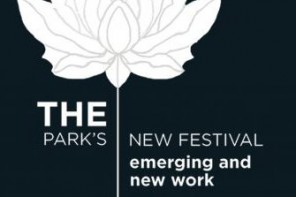Air, the unseen elixir of life, is more than just a name given to Earth’s atmosphere. A part of the four classical elements – air, water, fire and earth – air is the clear gas that lets living things breathe and live. The composition of our planet’s air is what sets it apart from others! With its indefinite volume and shape, air possesses a tangible connection with art.
As a medium of art, air is startlingly ubiquitous in contemporary as well as modern art. It seems to fascinate artists by its semi-presence. You know that air is all around you, you can feel its movement on your face, in your hands. But you just can never see it. Artistic curiosity is an uninhibited thing and air has not escaped its notice.
Playing with one of the four classical elements, we’ve dug up a few techniques of art (and artists too) which manage to manipulate air to suit their needs, sometimes bordering on the hysterical, always producing breath-taking results.
1. AIRBRUSHING
Airbrushing (not to be confused with the manipulation of images, no Sir!) is a method of painting that uses an Airbrush – a small, air-operated tool – to mix paint and air in order to create a fine mist that can be used on any surface. A compressor is required to generate enough force so as to push air through the airbrush and to blend it with the paint. Due to its easy-to-use nature, an airbrush is widely used for applying a base coat to a painting and because of its narrow nozzle, it can be used in painting the finer details.
Denis Peterson, an American hyperrealist painter, has been using airbrushing for a long time. He says,
I was airbrushing paintings with acrylics in the early 1970’s, something not done by photorealists, since acrylic paints clogged airbrushes which were designed for spraying inks and dyes. Later, acrylic paint companies began to produce “airbrush acrylic” colours which were essentially liquefied acrylics. However, I still prefer to make my own copolymer and polyvinyl resinous based paint formulas to achieve the lush colour glazes necessary for masterful photorealism paintings.
IMAGE COURTESY – DENIS PETERSON, AKVIS
2. JET ART
Conceived in 1982 by Prince Jurgen von Anhalt of Austria, Jet Art uses a jet engine’s air currents to render abstract contours on canvas, often producing mesmerizing results. After his death, his legacy has been kept alive by his wife Princess Tarinan von Anhalt, a Florida based artist. She hurls bottles of paints into the air, enabling them to be splashed onto the canvas by the robust jet engine currents. The technique is a lot harder than it appears to be as the artist has to withstand winds stronger than a hurricane and temperatures can often go up to 500 degrees Fahrenheit.
Besides painting canvases – a process for which clients pay upwards of $ 50,000 to watch – Princess Tarinan von Anhalt also uses Jet Art to decorate several pieces of clothing like jeans, swimwear and sportswear, all of which she displays at various fashion shows.

IMAGE COURTESY – NBC NEWS
3. HEAT GUNS
A common fixture in science laboratories and workshops, a heat gun is a device that is used to discharge hot air, with temperatures ranging from 200 – 1000 degrees Fahrenheit and can be held by hand. But that’s not all it’s used for! Art has always been associated with creative experimentation so why shouldn’t heat guns be a medium of craft? Heat guns with their ability to mould things come in quite handy for creating sculptures as artists can use them to melt materials and shape them accordingly. Making jewellery is another crafty way of using heat guns, quite popular with artisans.
Another popular use of heat guns in art is called Encaustic painting. It’s a beautiful process that involves heating beeswax with colour pigments and using them on a wooden surface or canvas. Brushes and other tools are then used to shape before it cools. Painters can use a heat gun to layer their work with more materials and to extend the time to work with the material. Ezshawn Winding, a Mexican artist who makes encaustic paintings says,
I make my paint from pure, filtered beeswax, tree resin and powdered pigments. This mixture is melted and worked hot on wood panels. Many layers of molten encaustic are painted and fused onto the surface of the paintings.
Mbongeni Buthelezi, an artist from South Africa, uses discarded plastic bags as paint by melting them with heat guns to create his masterpieces. He decided to use this innovative medium because he wanted to stand out from the crowd and this was quite the original idea meant to do just that. We wholeheartedly agree! He says,
With watercolour and other mediums that I have experimented with in the past, I felt that I’m hitting the ceiling.
He thinks that his chosen medium serves as a metaphor for life at large. He writes on his website, “I collect rubbish and create something beautiful from it. That’s what we can do with ourselves and our lives.”
IMAGE COURTESY – EZSHAWN WINDING, ODDITY CENTRAL
4. SKYWRITING
Skywriting, a concept that we’re all quite familiar with, is a process which utilizes a small aircraft – with the capability of expelling a certain kind of smoke during flight – to fly in certain patterns that creates writing in the sky visible and readable to someone on the ground. While the date of inception of skywriting is disputed, it is widely accepted that its origin dates back to the early 20th century. Now we’ve only ever seen or heard of skywriting being used for writing greetings or marriage proposals in the sky (all thanks to pop culture for that) but that’s not all it’s limited to.
Brazilian artist Vik Muniz used skywriting for his “Cloud Cloud” art project in 2001 by creating a cartoonish cloud over the New York City Skyline to hang out with the real guys! The project reflected upon Vik’s interest in the illusory nature of everyday objects.
More recently on August 30, 2015, artist DK Pan staged a skywriting of his poem “Time Is Memory” over Seattle. The letters appeared in the sky one by one, and faded away gradually, giving a tantalizing view of his art to the residents of Seattle.
IMAGE COURTESY – NPR, DK PAN
5. AIR COLLAGES
A term coined by Brazilian artist Lorenzo Castellini for his latest project that aims to turn his appreciation for art into something that makes people laugh. Entitled ‘Art Lies’ – he has an Instagram account with over 37.9K followers by the same name on which he posts the hilarious results of his project – Lorenzo wanders the streets of Sao Paulo where he lives, superimposing pieces of popular classical paintings against real-life people and situations.
Talking about why he calls his technique ‘air collages’ he says,
My definition for “air collage” is any composition created by the juxtaposition of any form or shape into the subject without physical contact between them.
In his work you will come across the most interesting of characters, from a chef with Van Gogh’s face to a rabbi with a face made up of René Magritte’s apple. You may even see a door from a Matisse painting lurking in an otherwise bleak grey wall or Mona Lisa lounging on the beach. As unique and eye-catching as Lorenzo’s art may be, it sure has the wonderful effect of brightening up anyone’s day!
IMAGE COURESTY – LORENZO CASTELLINI
Invisible as it may be to our eyes, air possesses properties that verge on the palpable. It can be cooled, it can be heated. It can be scented or gushed into galleries. It can be compressed and let out in titbits at will. It can even be cursed. Seriously, it has been done.
Air not only gives life to our bodies but also to our minds, literally and figuratively. It’s a paradox, a contradiction to be understood and handled freely. After all, it takes a true artist, a visionary, to build castles in the air.
























